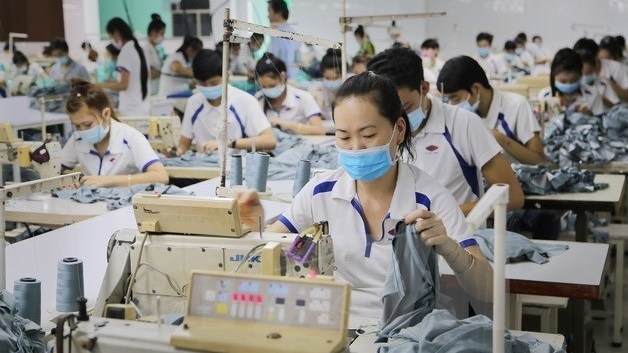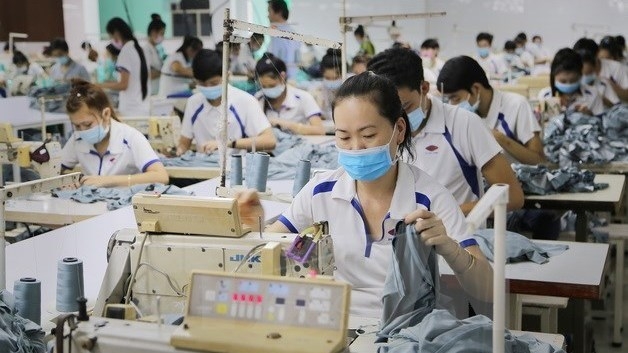


Boosting cooperation between Vietnam and India in the garment and textile sector will be one of the priorities in efforts to raise bilateral trade value to US$ 15 billion by 2020, said Parvathaneni Harish, Indian Ambassador to Vietnam.

Vietnam and India will boost cooperation in the garment and textile sector to raise bilateral trade to US$15 billion by 2020 (Photo: VNA)
Speaking at an event to introduce the exhibition Source India 2018 in Ho Chi Minh City on July 17, the Ambassador held that garment-textiles is one of the traditional industries that play an important role in socio-economic development of both Vietnam and India.
It is also the industry the Government of Vietnam and India have prioritised to developing and cooperating with an aim of enhancing bilateral trade and building a supply chain for the sector in the future, he added.
Currently, India owns a strong fibre and yarn production industry that is able to produce almost all kinds of fabric and supporting materials available in the market, making is one of the three largest textile products providers in the world.
Meanwhile, Vietnam is in the top five garment exporters in the world with export turnover reaching US$ 31 billion in 2017. However, Vietnam has had to import a large volume of materials for the sector, with US$ 19 billion in import value in 2017, he noted. Vietnam is a promising market for Indian firms, he affirmed.
Anil Rajvanshi, Chairman of the Synthetic and Rayon Textiles Export Promotion Council of India, said that India is strong in producing and exporting textile products from synthetic yarn, a material fabric that is being used widely in the world garment industry with high expansion prospects in the future.
He asserted that although India and Vietnam can supplement each other in the supply chain of the garment sector, the two-way trade in the area remains modest. In 2017, India’s garment exports to Vietnam reached US$ 429 million, up 44 percent over 2016, while Vietnam shipped only US$ 178 million worth of garment products to India.
In order to promote cooperation and improve trade in the sector, India has set a target of exporting US$ 1 billion in materials to Vietnam in the coming time, he revealed, while calling for Vietnamese firms’ active engagement in trade promotion and business exchange activities to set up closer and more effective partnership.
Nguyen Thi Tuyet Mai, Deputy General Secretary of the Vietnam Textile and Apparel Association, said that despite being one of the five largest apparel exporters in the world, Vietnam is also one of the countries that import the highest amount of garment and textile materials in the world.
Vietnam’s garment and textile export is potential for growth with estimated revenue of US$34 billion in 2018. Therefore, demands for materials and equipment for the sector will also rise considerably, she said.
Deputy General Secretary of the Vietnam Textile and Apparel Association Mai lauded the quality and diversity of India’s material fabric as well as textile equipment and technology.
She held that the promotion of cooperation in the garment and textile sector between Vietnam and India will pave the way for enterprises of both sides to optimise their strengths and advantages. Vietnam will benefit from more materials, technology and equipment for production, while India can expand its market, stated Deputy General Secretary of the Vietnam Textile and Apparel Association Mai.